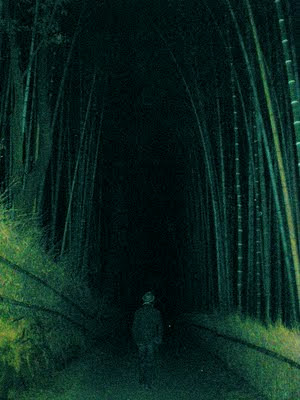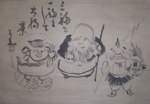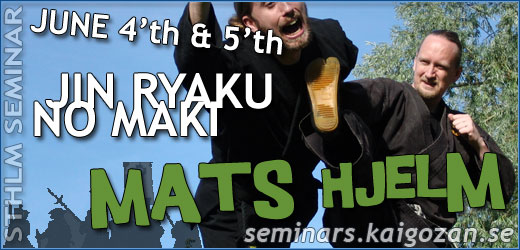From Bujinkan Santa Monica by Bujinkan Santa Monica
 |
| Silent Hill, photo by Jon▲ |
What's with all the clapping when we bow in?
One of the first strange things a new student in the Bujinkan has to do - after putting on a hood and tabi to scale the castle wall on a moonless night to sneak into the dojo - is learning and performing the bow in before class. Hopefully it only takes them a few mumbles to learn the phrase "Shikin Haramitsu Daikomyo," while they clap and bow, even as their face shows the strain of a beginner sitting in seiza.
We all went through this. No matter our age or rank. For me, I remember just trying to fit in during the class. Saying nothing at first, hoping to time my claps with the rhythm of the group. I first learned about one translation of the words when I was trying to learn to pronounce them. I won't go into that now (another post maybe). But what I will say is that the bow in process turned into a habit that lost what little meaning I could give it.
Many years later - maybe when I first had to lead a bow in myself - I gained a deeper understanding of that process.
So how does it go?
Sanpai sahō 参拝作法 The usual way to worship in the presence of the kami (at a shrine) is to bow twice, clap twice, and bow a third time.
This is like a secret for how to jump start 心伎体 Shin Gi Tai.
The body (deeds), mouth (words) and consciousness (thoughts)- are made one and equal in one instant while the concentration is undisturbed.
In the practice of esoteric Buddhism the body becomes the symbol or mudra, the mouth expresses the mystic sound or mantra, and the mind is absorbed in meditation.
So just what does the clapping symbolize? For me it is like light and sound coming together in an instant of Daikomyo! But in Shinto it has different aspects:
It is used to get the attention of the Kami. And to purify with 言霊 otodama - the spirit present in sound or language.
According to the Kojiki 古事記 (Japan's oldest surviving text complied around 712 AD) and Nihon Shoki 日本書紀 (Japan’s second oldest book, compiled around 720 AD), the sound made by clapping hands is the same sound that divided chaos into heaven and earth and gave birth to Japan.
It could be the sound made by the closing of the cave door after the sun goddess Amaterasu came out of the cave where she had been hiding)
Hand clapping is distinguished by the number of claps, such as "short clapping" one to three times (tanhakushu) or "long clapping" of four claps (chōhakushu).
There are also distinctions based on the manner of clapping, which includes shinobite, raishu, renhakushu, and awase hakushu.
Shinobi te involves silent clapping and is performed at "Shinto funeral ceremonies" (shinsōsai) and other occasions.
Raishu is performed, for example, when presented with a cup of sake. At Shinto ceremonies, "two hand claps" (nihakushu) is generally common. Moreover, according to the conventional explanation for kashiwade as an alternative word for hakushu, kashiwade is a popular name derived from confusion between the character for "oak tree" (kashiwa 柏) and the character haku 拍. Another theory suggests that the name kashiwade is related to the raishu etiquette of hand clapping before "food served on individual tables at a banquet" (kyōzen) following a Shinto ceremony as well as to the fact that both kyōzen and "food served on individual tables" (zenbu) are called kashiwade.
— Shimazu Norifumi
So what does all this mean for you? If you are not a practicing Buddhist or Shintoist, maybe not too much. Maybe it's just one of those odd things you have to do before you start punching your buddies. But I think if you consider it in terms of unifying and bringing together your thoughts, words, and actions - it may develop into something more powerful for you.



…
















 I just got another friend request from someone who claims to be a “Ninja Sōke” (I only know one and he is not on fb!). I usually say yes to everyone who seems to be a Bujinkan member, or someone I know. This guy probably just want my name to add credibility to what he is claiming. I see we had 37 mutual friends, all (I think) is Bujinkan members. I wonder why do you add people like these as your fb friend, unless you know them?
I just got another friend request from someone who claims to be a “Ninja Sōke” (I only know one and he is not on fb!). I usually say yes to everyone who seems to be a Bujinkan member, or someone I know. This guy probably just want my name to add credibility to what he is claiming. I see we had 37 mutual friends, all (I think) is Bujinkan members. I wonder why do you add people like these as your fb friend, unless you know them?




